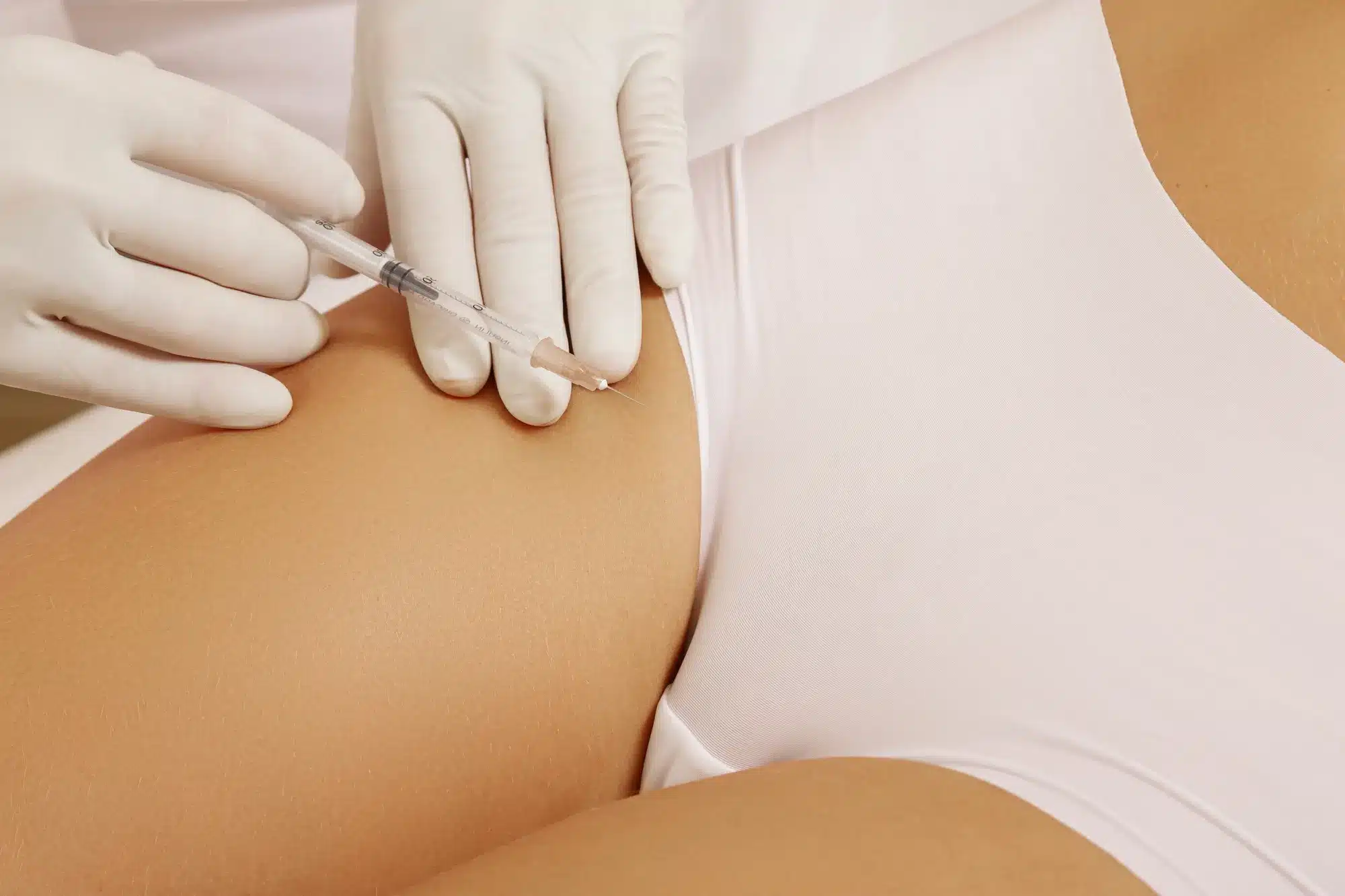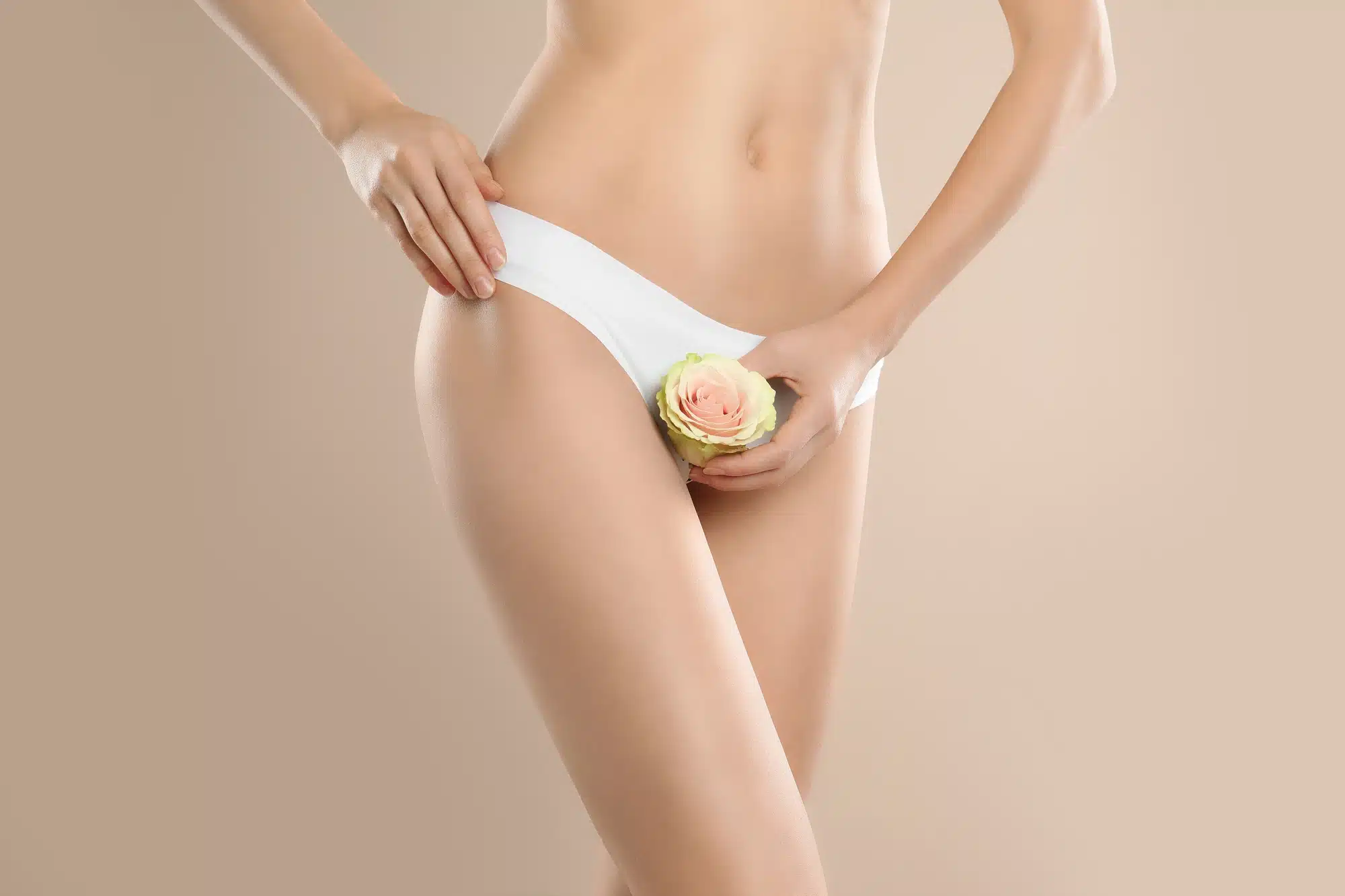
Labia filler injections are undoubtedly becoming popular by the minute, and rightfully so.
Vulvovaginal laxity is an issue that can affect patients’ sexual lives and overall confidence and comfort. Whether they experience it after childbirth or during a normal aging process, they can be reassured by knowing there is a method of vaginal rejuvenation that doesn’t require surgery.
In recent years, there has been a tremendous increase in aesthetic vaginal procedures. One study focused on safe practices in female genital plastic surgery stated that “Labiaplasty in particular has increased 600% in less than a decade in the United States, from 2142 procedures in 2011 to 12,903 in 2019. These numbers are likely underestimated because they do not account for the procedures that gynecologists perform.”
Now, with various vaginal filler injections, your clients can avoid undergoing surgical procedures to target adequate labia concerns and choose a safer and more approachable route for a so-called designer vagina.
If you’re considering to start offering this procedure in your practice, this article will help you evaluate the effectiveness of vaginal rejuvenation with fillers.
Key Takeaways
- Cosmetic gynecology is a growing field, attracting more medical professionals.
- Labia filler injections are a non-invasive alternative to certain surgical procedures.
- Labia puff can help women struggling with laxity, deflation, wrinkling, and excess skin in the labial area.
- Other benefits of labia puffs include an increase in self-confidence, sexual satisfaction, less discomfort during exercise or other movement, and less discomfort when wearing tight clothing.
- There are different approaches to labia puff, with labial injections proving to be the most practical, offering quick results and lasting effects, but with the need for upkeep every six to twelve months.
- The side effects of labia filler procedures are no different from other injection treatments, with rare cases of infection.
Why You Should Start Offering Labial Puff Procedure
The labial puff procedure can be a valuable addition to medical or aesthetic practice as it addresses concerns related to labial atrophy, deflation, wrinkling, and loss of volume, which can affect a woman’s self-esteem and comfort. By offering this procedure, you expand your services to meet the growing demand for aesthetic gynecology procedures, which can increase patient satisfaction and attract a broader client base. It can also help you diversify your offerings, set you apart from the competition, and increase your practice’s revenue streams.
Labial rejuvenation encompasses various dermal techniques tailored to enhance the women’s intimate region’s aesthetic appearance and functionality. Research in this field recognizes the following procedures: “These can be surgical (e.g. vaginoplasty, labia minoraplasty, labia majoraplasty, clitoral hood reduction, clitoral unhooding, lipofilling, and hymen reconstruction) or nonsurgical (e.g. energy-based treatments, platelet-rich plasma, and fillers) interventions.”
The least invasive vaginal rejuvenation option involves the application of specialized dermal fillers to women’s intimate area. This will enable you to achieve desired results, although some patients may opt for the surgical alternative involving autologous fat grafting.
While labia puffing surgery will create permanent effects, not all women are fit to undergo an operation. Recovery from the surgical procedure takes much longer than if your client were to try dermal fillers, which offer faster and long-lasting results, though with the need for repetitive treatments.
Whatever the preferences may be, the key here is to have a thorough consultation and examination of the patient’s condition, with a deep understanding of their medical history. This will determine the best approach for the labia puffing procedure, always keeping in mind the women’s psychological reasons for deciding on these treatments.

How to Administer Labia Filler
Because of the sensitivity of the application area, labia filler injection need to be administered strictly by medical professionals trained to perform this procedure.
The procedure starts with the patient in a lithotomy position and an examination of the correct location of the injection. Local asepsis will be applied to minimize the risk of infection, and intradermal anesthesia should be used to ease the discomfort. Then, injectable product should be administered following the manufacturer’s guidance, as well as the standard protocol used in these cases.
The procedure itself does not last long. The patient can expect to be held from half an hour to up to an hour and is advised to refrain from physical activity and sexual intercourse for the following days or until the discomfort from the procedure diminishes. Complementary gynecological products can be prescribed as necessary.
Patients can expect to sense minor discomfort or occasional side effects of the procedure but can otherwise resume their daily activities, expecting to see first results as soon as labia puff recovery ends.
Let your patient know that labia puff is not permanent. They might want to revisit you in six to twelve months after the first procedure to maintain the desired results.
Labia Filler Side Effects
As with all injectable treatments, some minor side effects can be expected upon undergoing vaginal lip injections and injections in the surrounding area. Advise your patients to expect some of the following side effects of a labia puff treatment:
- Redness, bruising, swelling of the injection site
- Rash and other skin reactions on the injection site
- Pain
- Itchiness
- General discomfort
Your patient may also experience a fever after the procedure. If it persists, let them know to contact you. In rare cases, labia puff treatment can lead to an infection and an allergic reaction to some of the filler ingredients. As a medical professional, be careful where you source your products, and always ensure you are reaching out for top-quality products sold by renowned distributors like Doctor Medica.
Recommended Products for Labia Treatment
There are a number of brands for labia filler injections on the market, most of which use CaHA or HA as their active ingredient.
A study focused on the treatment of atrophy of the labia majora states that “CaHA and HA are both effective and safe for treating the intimate region, and this study cannot prove the superiority of one over the other.”
That said, you might want to explore the following products, created solely for the treatment of the intimate region:
- NEAUVIA™ ORGANIC INTENSE ROSE: With the highest possible HA concentration, bringing volume, firming, and shape correction with a considerable rejuvenation effect.
- DESIRIAL® 2x1ml: Designed to improve the female intimate region’s hydration, elasticity, and tone.
Or you might want to explore renowned universal areas volumizing fillers that many medical professionals use daily in their practice, and that can be used on the labia as well. Some of them are JUVEDERM® VOLUMA™ With Lidocaine and JUVEDERM® ULTRA XC.
For more appropriate dermal filler options, feel free to explore our shop.
Conclusion
Cosmetic gynecology is an emerging field that quickly catches the attention of aesthetic and medical professionals. With the ability to approach once-taboo topics of labial aesthetics and functionality, labial puff treatments involving injectable fillers are becoming more popular as an effective way of targeting labia appearance and functionality that women experience due to genetics, the aging process, childbirth, or hormonal changes. This treatment is offering fast results with effects lasting from six to twelve months, depending on the patient.
For more information on labia filler injections, procedures, and products available, as well as advice on how to incorporate labia puff into your business, feel free to contact our VIP customer support.
FAQ
How long does a labia puff last?
The results of a labia puff procedure can last between six to twelve months, depending in each individual patient and injectable fillers used in the procedure.
Can you put filler in your labia?
Yes, you can undergo an injectable treatment with fillers designed for labia puffing.
Is labia puffing safe?
Labia puffing is a safe procedure, with only minimal side effects possible.
What are the side effects of labia fillers?
Side effects of labial augmentation with fillers include redness, swelling, discomfort, and, in rare cases, allergic reactions and infections if not administered correctly.
Can you BOTOX® your labia?
There are vaginal BOTOX® treatments available. Besides vaginal treatments, BOTOX® can also be used for menopausal hot flushes treatment.
Can I reduce my labia without surgery?
Yes, there are other ways to reduce labia, like exercise, laser or dermal fillers, depending on the requirements.
References
Furnas HJ, Canales FL, Pedreira RA, Comer C, Lin SJ, Banwell PE. The Safe Practice of Female Genital Plastic Surgery. Plastic and Reconstructive Surgery – Global Open. 2021;9(7):e3660. doi:https://doi.org/10.1097/gox.0000000000003660
Garg S, Bansal A, Manjot Kaur Marwah. Vaginal Rejuvenation. Published online January 1, 2022:587-613. doi:https://doi.org/10.1007/978-981-16-6065-8_27
Tarabini F, Rozemberg L, Zapata-Sudo G, Braz A. A Novel Hyaluronic Acid Filling Technique for Restoring Volume of the Labia Majora. Cureus. Published online September 21, 2023. doi:https://doi.org/10.7759/cureus.45728
Labia Augmentation with Filler. Aviva Plastic Surgery. Accessed March 8, 2024. https://www.avivaplasticsurgery.com/womens-wellness/labia-augmentation-with-filler/
nicholas. Here’s why labiaplasty is on the rise | Plastic Surgery Associates. Canales, Paco (enhanceyourimage.com). Published May 2, 2023. Accessed March 9, 2024. https://enhanceyourimage.com/heres-why-labiaplasty-is-on-the-rise/
Vilela CL, de Lima Faria GE, Boggio RF. Treatment of Atrophy of the Labia Majora: Calcium Hydroxyapatite or Hyaluronic Acid? Aesthetic Plastic Surgery. 2024;48(3):472-477. doi:https://doi.org/10.1007/s00266-023-03617-3
Related Articles
Joanna Carr
Restylane Smile Lines: Address Nasolabial Folds
Restylane is a dermal filler that doctors use to smooth smile lines or nasolabial folds. Shop today on Doctor Medica.
Joanna Carr
Lanluma vs. Sculptra – Comparing Body Sculpting Treatments
Lanluma and Sculptra are both collagen-stimulating fillers designed for body contouring. Compare their mechanisms, longevity, and ideal treatment area...
Joanna Carr
Ellanse Tear Trough – Filling and Smoothing
Ellanse is a dermal filler used to treat tear troughs. It provides a non-surgical solution to fill and smooth this delicate area.


